How to use papier-mâché in the interior
Torn paper - this is how papier-mâché stands for French. The technique originated in ancient China, which is considered the birthplace of paper. An approximate dating of the oldest product is the 3rd century BC. After this kind of crafts they began to do in Persia and Japan, and only by the 17th century did they begin to use papier-mâché in the interior in Europe.

With the help of papier-mâché you can do anything, you need only a little imagination and more patience

Stone framing in this photo is made of papier-mâché.

At first glance, the figure seems to be made of non-ferrous metal, in fact, inside it is paper
Decorative elements of the interior, bowls, vases, photo frames and much more are made from a mixture of paper and glue.
Content
Execution technique

The paper papier-mache technique uses “paper dough” consisting of glue and soft paper
The most common techniques for making papier-mâché products are:
| Mash | Pieces of paper that are torn into small pieces are glued to the mold. Each layer of paper is coated with glue and allowed to dry. |
| From paper pulp | It is created by mixing soaked paper and glue. Sometimes supplementing with the necessary ingredients. |
| Pressed cardboard | Corrugated cardboard is abundantly coated with glue and squeezed to give it the necessary shape. |
There are no special questions with the first and last options, but the preparation of a mixture for paper products requires more careful consideration.

Machining technique allows you to create thin and durable things.
Recipes for making papier-mâché mass
How many masters, so many options for cooking papier-mâché masses. Below are the most popular entries that many needlewomen liked. Store the finished mixture in sealed plastic bags or plastic containers. This will help keep the material moist. Containers must be refrigerated.

Softened paper can be prepared in advance, but glue must be added immediately before use.
First option
We will need:
- approximately 60 grams of dark colored toilet paper;
- dry chalk;
- potato starch;
- clay, but it can be excluded;
- PVA glue;
- adhesive bustilate.

Source materials
Unwound paper is placed in a bowl with water for swelling, after it is squeezed out and interrupted until flakes appear.
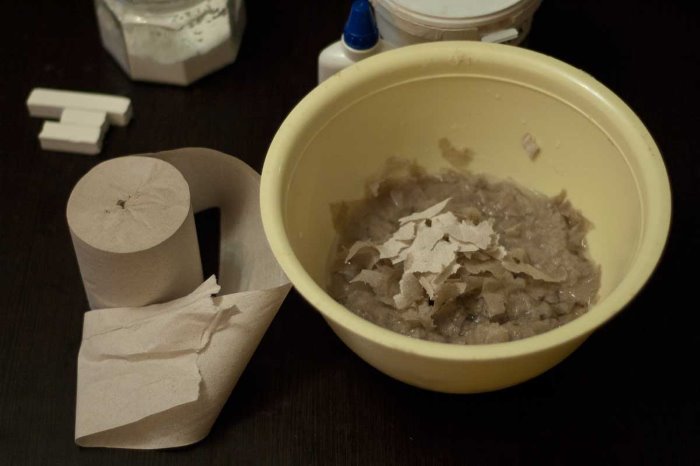
Ground mass
At this stage, the weight should be 280 g. Then add clerical glue (50 ml) and 3 tablespoons of Bustilate, knead with a mixer. Put 3 small spoons of clay and starch and mix again until smooth. Bring to readiness the mass for papier-mâché by kneading with the addition of dry ingredients.

The finished mass can be stored for a long time, depending on humidity
Second option
Papier-mâché porcelain is not the cheapest to produce, but is notable for its quality and light translucency. Used to make dolls or kitchen utensils.
It requires high-quality toilet paper (white), cold-pressed flax oil (1 tbsp.), Wallpaper glue (2 tbsp.).

The mass of this recipe goes more plastic
Papier mache best ideas
The use of papier-mâché in the interior, the ideas of which are easy to come up with on your own or peep in the records liked by numerous network users. Products made in this technique are lightweight, but quite durable. With it, a delightful Easter bunny or even wall decor will come out.

The items made using the papier-mâché technique are strong enough, lightweight, and most importantly, unique.
Papier-mâché vases
A correctly selected vase can decorate any room design and become its highlight. Papier-mache decor with your own hands allows you to bring any idea to life. Such things will be carriers of the creator's positive energy.
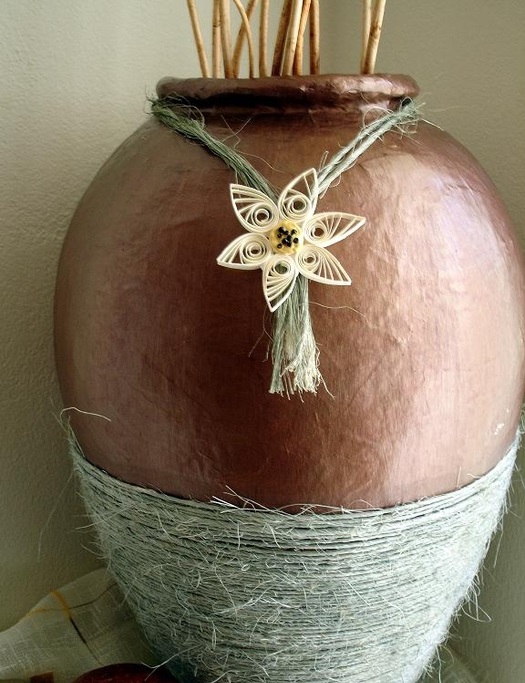
You won’t say right away that this vase is made of paper
To create it, you will need:
- newsprint;
- packaging paper;
- glue;
- stationery knife;
- not a natural brush;
- primer or acrylic paint;
- topcoat paint;
- decorative elements;
- petroleum jelly.

For work, you will need an old vase as a basis
Before gluing with cut pieces of paper, it is necessary to treat the mold with petroleum jelly so that it can be removed well. Scraps are glued in layers, alternating layers of newspapers and thicker paper. They need to be done at least six. Allow the workpiece to dry completely.

The newspaper is cut into small pieces and pasted in several layers
Then make incisions to get the shape. The seams are fastened with paper tape and another layer of wrapping paper is added.

We cut and pull out the vase from the newspaper cover
After drying, the vase is opened with a white primer, sanded and then covered with a layer of paint that has been selected. At the last stage, the decor is fixed.

Be sure to tear the vase with a primer

As a decor, you can use twine
Wall decoration
The most common do-it-yourself papier-mâché wall decor is brick or stone. For their manufacture, you can use recipe number 2 for cooking mass. And also, you need a form of glass or plastic. You can also adapt the cardboard packaging for juice, which is covered with a bag.
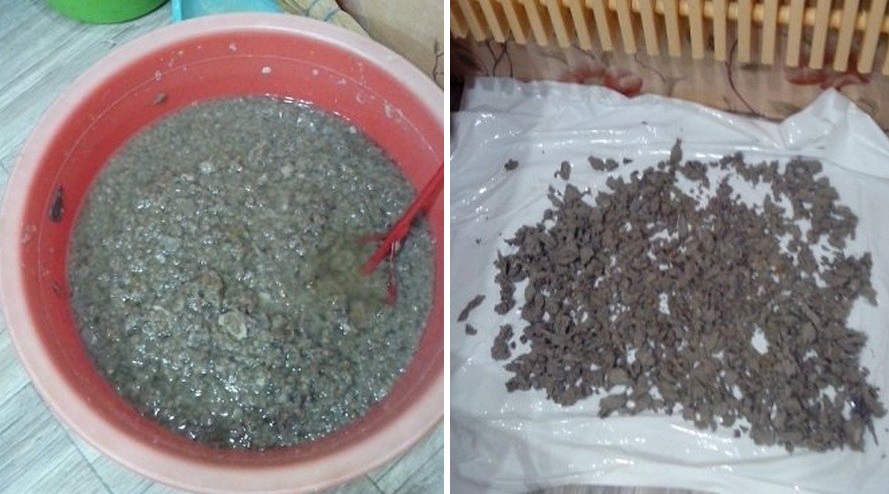
The cardboard is torn into pieces and poured with boiling water. The cooled mass is carefully crushed and dried
The finished mixture is distributed in shape, making a brick. Allow to seize and spread on paper until completely dry. If papier-mâché bricks in the interior of the house are supposed to be used on curved surfaces or corners, then you need to fix them slightly moist to the wall. Completely dry workpieces do not bend, but they can be easily ground.

The pulp is mixed with glue and stacked in forms. Dried bricks fasten on the wall
Bricks glued to the surface are wiped and primed. After, you can start staining in the desired color or several shades. At the last stage, they open everything with varnish so that the decor elements can be wiped with a damp cloth.
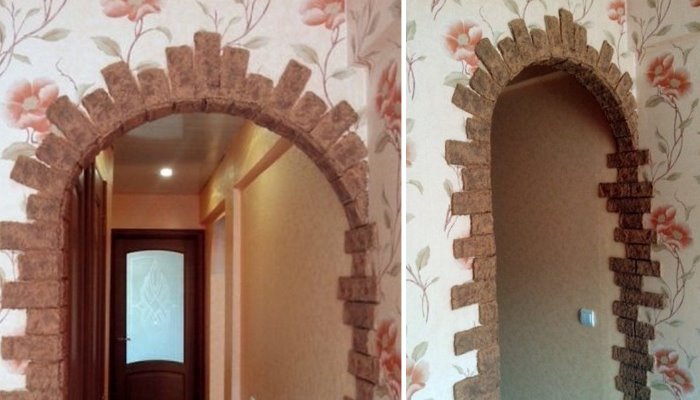
The final stage - painting
And also, papier wall decor using technology can be used to make elements in the form of an ornament or volumetric flowers. For experienced craftsmen, there are options for the manufacture of three-dimensional paintings, which will be a great addition to the design.
African motives
The wall decor of papier-mâché includes the manufacture of once popular ritual masks. Such souvenirs will be a great addition to the African style, which provides for the presence of animal prints and an abundance of ornaments.
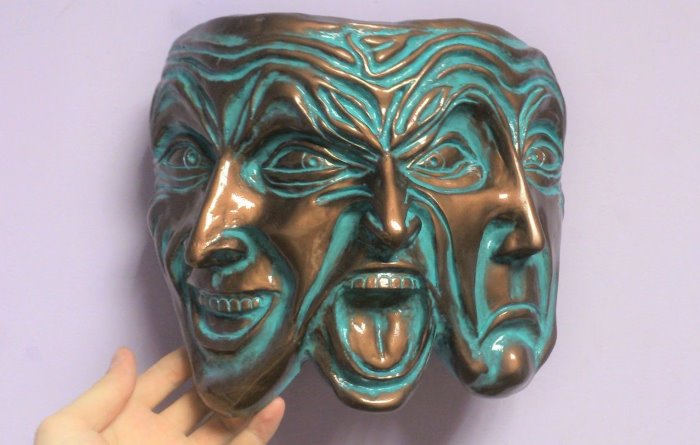
Before work, you need to draw a sketch of the future face or take as a sample the finished mask you like
For their manufacture it is useful:
- mass of papier-mâché;
- the right size food trays;
- primer;
- paints.
A mass is applied to the base, covering the entire tray with an even layer. Further, with the help of simple manipulations, they form the nose, lips, eyeballs and eyebrows. The workpiece should dry well.

A thick layer of mass can dry up to two days
Then the mask is primed and ground. And the final stage is painting.A loop is fastened behind which you can hang the product. The work is completed.

Before painting, it is necessary to clean the mask with sandpaper and, ideally, cover it with a thin layer of putty on wood
Such masks are made of any size and with different facial expressions. As hair, you can use natural threads and wooden beads strung on them.

Funny papier-mâché hares

Decorative dishes for decorating the kitchen or living room
To make papier-mâché pulp, not only toilet paper is used. Ordinary egg trays can also be a good basis. They are crushed and soaked in water, and the rest of the technology is repeated. You can not take a lot of materials and confine yourself to glue and paper pulp. Make papier-mâché home decor with pleasure!
Video: master class on making 3D paintings for the interior
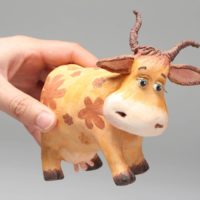




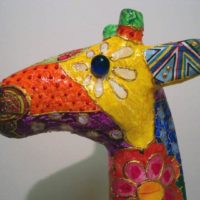
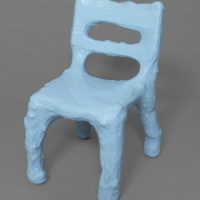
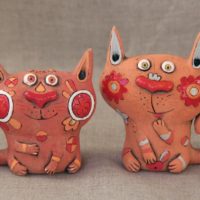



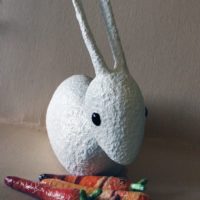
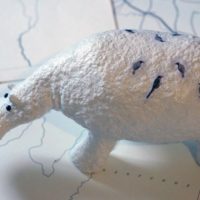



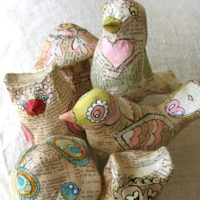

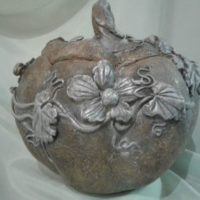

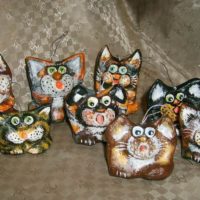

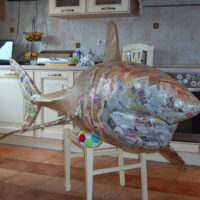



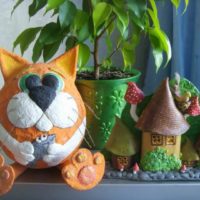


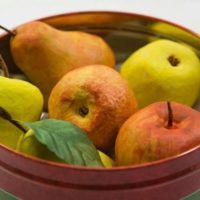





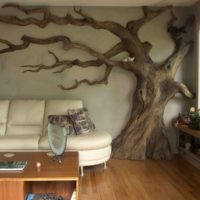










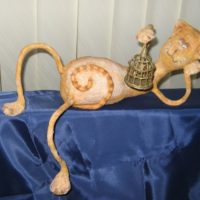

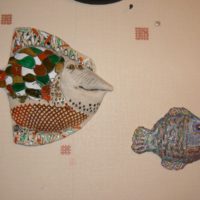
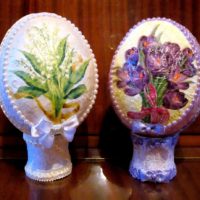
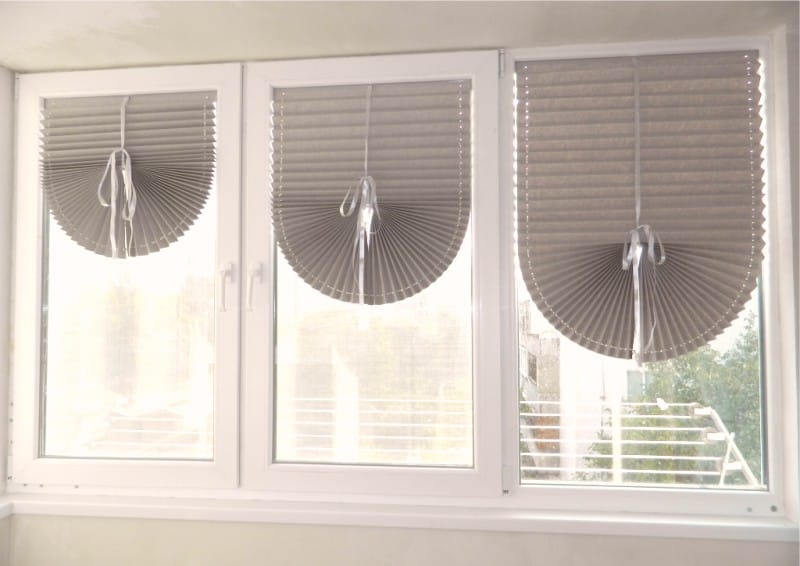













Can I order you 7 papier mache jugs?